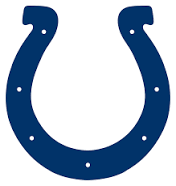New Orleans Saints
- Paul Grange

- Sep 23
- 2 min read

When the NFL awarded New Orleans a franchise in 1966, the city knew exactly what name belonged on its team. They chose the Saints, unveiled on November 1 — All Saints’ Day in the Catholic calendar. It was a nod to the city’s deep French and Catholic heritage, where faith and culture intertwine. The badge carried the fleur-de-lis, the lily symbol long associated with French monarchy and New Orleans’ own identity, flown on flags and carved into iron balconies.
New Orleans’ French roots run deep. Founded in 1718 by French colonists, the city grew at the mouth of the Mississippi River, a port that controlled the gateway to the continent. Passed to Spain and back to France before being sold to the United States in the Louisiana Purchase of 1803, New Orleans remained distinct: French language, Catholic churches, jazz funerals, Mardi Gras parades. Out of this mix came Creole culture, blending European, African, Caribbean, and Native influences into a cuisine, music, and identity like nowhere else in the world.
The city’s spirit was never clearer than in the Battle of New Orleans (1815). American forces under Andrew Jackson, joined by militia, free Black soldiers, Native allies, and pirate crews led by Jean Lafitte, defeated the British in a stunning victory. The battle, fought after peace had technically been signed in Europe, cemented New Orleans as a symbol of American resilience and cultural unity.
That legacy of resilience rose again in August 2005. Hurricane Katrina ripped through the Gulf Coast and overwhelmed the New Orleans’ levees. The city drowned. Entire neighbourhoods vanished beneath floodwaters. I-10 was strewn with upturned cars for weeks afterwards. Corpses floated in the streets, families were stranded on rooftops, and at the Superdome, tens of thousands huddled in misery, trapped in unbearable conditions. One of the most haunting images was the prisoners of Orleans Parish Prison, herded out and held on a highway overpass, shackled in the sweltering heat while chaos reigned around them.
When I personally visited just weeks later, the devastation was still raw — the roads still littered with wreckage. But even then, a strange sight emerged: churches rebuilding first, their roofs patched, their doors open. Donations poured in from parishes across the United States and even overseas. These networks of faith and community became lifelines, giving shelter, food, and dignity back to those who had lost everything.
The Saints had always been beloved, but after Katrina, they became something more: a rallying cry. In 2006, with Drew Brees at quarterback and Sean Payton as coach, the team gave New Orleans hope. Each game at the Superdome — itself repaired and reopened — became a symbol of defiance. In 2010, when the Saints won Super Bowl XLIV, beating Peyton Manning’s Colts, it wasn’t just a victory for a franchise. It was a resurrection. For a city that had stared into the abyss, the Saints brought joy, pride, and unity back to the streets.
The Saints’ logo — that golden fleur-de-lis — is more than design. It’s a reminder of French founders, Catholic feasts, Creole resilience, and a battle that made legends. But most of all, it’s the symbol of a city that survived Katrina, rebuilt itself from the churches outwards, and still finds ways to dance, even through disaster.







Comments